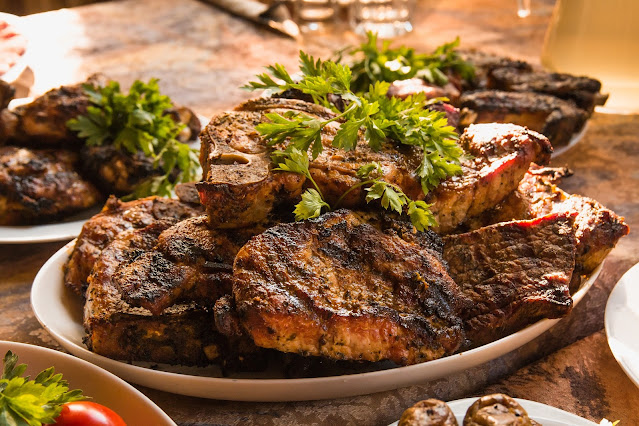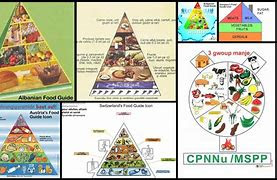How to Easily Reach Your Daily Protein Goals: A Simple Guide for Every Diet Type
Whether it is a meat-based diet, vegetarian, or vegan, each is supposed to be able to make the daily target of protein intake. This is because proteins are usually described as the building blocks of muscles and help in the production of hormones responsible for nutrient transport in the body. Whatever type of diet a person may be into, the average should make sure to consume at least 100 grams daily to help keep his functions running and energy levels boosted.
For more informative articles, visit website https://trendyvibesdaily.blogspot.com
Below, this post breaks down what 100 grams of protein looks like on different diets to make reaching your goals a whole lot easier-whether you're a meat lover, completely avoid animal products, or enjoy a little bit of both. Let's dive in!
Why You Need Protein
Protein plays a huge role in nearly every bodily function that keeps you alive and kicking. It repairs muscles, it sustains the metabolism, it helps in the regulation of hormones, and it even boosts the immune system. If you happen to be a very active person or looking to build any sort of muscle, then you may need much more than the average 100 grams per day. Tailoring your protein intake can be extremely dependent on the level of one's activity, but for most, the goal still stands: 100 grams of protein-minimum.
Here's how you can conceptualize and hit that, regardless of what your diet looks or sounds like.
Omnivore Protein Guide: How to Easily Hit 100 Grams
If you consume animal products, hitting 100 grams of protein can be quite easy. Of course, the eggs, meats, and dairy products, along with all the plant-based foods, can quickly add up to your daily intake.
Example Daily Protein Breakdown for Omnivores:
2 eggs – 12 grams
Snack cheese – 5 grams
Greek yogurt: 15 grams Beef sausage: 14 grams 1/4 tin of tuna: 27 grams ½ cup of rolled oats: 5 grams 2 oz of deli ham: 10 grams 1 oz of mixed nuts: 5 grams 2 slices of rye bread: 10 grams Total: 103 grams of protein.
This mix is well-rounded in that, aside from hitting your goals, you will have acquired different flavors and nutrients for the fueling of the body.
Quick and Easy for Animal Protein Only
In a diet with mostly sources that come from animals, that 100 grams can be quite easy. Most animal proteins are pretty dense, so to get to that target doesn't take as much food.
Sample Daily Protein Breakdown for Animal Proteins:
4 Eggs = 24 grams
1 can of Tuna = 27 grams
3 Beef Meatballs = 15 grams
2 oz of Turkey Bacon = 10 grams
3 oz of turkey breast-24 grams
Total: 100 grams of protein.
This alone will allow you to meet your intake with fewer sources of food. Throwing in a few grains, vegetables, and other nutrient-dense foods will round out your meal but still keep you high in protein.
Vegetarian Protein Guide: Balanced and Delicious
For vegetarians, there are so many sources of proteins-from eggs, dairy, nuts, or plant-based powders-that make the task of hitting 100 grams highly achievable by combining protein-dense foods throughout the day.
Sample Vegetarian Food Items and Their Protein Gram Count:
4 eggs-24g; ½ cup of rolled oats-5g; 2 snack cheeses-10g; ¼ cup of protein granola-10g; Greek yogurt-15g; 1 tbsp of hemp seeds-4g; 2 tbsp of peanut butter-7g; 1 scoop plant-based protein powder-20g. Total: 99g of protein.
So it's such a mix of variety and flavor, all while keeping you at that 100g mark. You can always just add a smidge more peanut butter or another serving of Greek yogurt to help you push over the edge.
Vegan Protein Guide: Power Up with Plants
While vegan, it can be a little tougher to hit 100 grams of protein, but it is most definitely doable with just a bit of planning. A person can get pretty darn close by using nuts, seeds, grains, and plant-based protein powders well before reaching for animal sources.
Example Daily Protein Breakdown for Vegans:
1 oz mixed nuts: 5 grams
½ cup rolled oats: 5 grams
1 Protein granola bar-8g 2 slices of rye bread-10g ¼ cup of protein granola-10g 1 tablespoon of hemp seeds-4g 2 tablespoons of chia seeds-10g 2 tablespoons of peanut butter-7g 1 scoop of plant-based protein powder-20g Total: 79 grams of protein.
To that 100g mark, you can add chia seeds, hemp seeds, or even a little more peanut butter. You can even add tofu, tempeh, or plant-based burgers as vegan substitutions for meat-really getting that uptake of protein.
Tips to Maximize Your Protein Intake
No matter what your dietary persuasion, the key to success lies in the distribution of protein throughout the day. Instead of loading up on protein in just one meal, try to include protein in every meal for better distribution of amino acids-what your body uses to repair and build tissues-throughout the day.
Here's a couple more tips to help reach your protein goals:
Plan ahead: When possible, make a big batch of protein-rich snacks and get some lunches and dinners ready so you won't be stuck later on. Mix it up: Switch around different sources of protein to make sure you are varied enough. Prioritize whole foods: Though helpful sometimes, protein powders and supplements are best started with whole food sources. Smart Swapping: Switch low-protein-containing ingredients out with ones that are high in protein, such as switching white bread out for rye bread or cereal for granola. Conclusion
Whether it's a meat eater, a vegetarian, or a vegan, reaching your daily protein goals isn't necessarily devil's play. And this intake of protein can easily go down, even up to 100 grams with multiple mix-and-match sources. Now get creative in the kitchen, make the changes, and see for yourself benefits from a protein-enriched diet!
*This article is purely for information and education purposes and shall not be treated as a substitute for professional medical diagnosis or treatment by a healthcare professional. It is always best to consult with your health professional before acting on anything that relates to your health and nutritional needs.





.jpg)








0 Comments